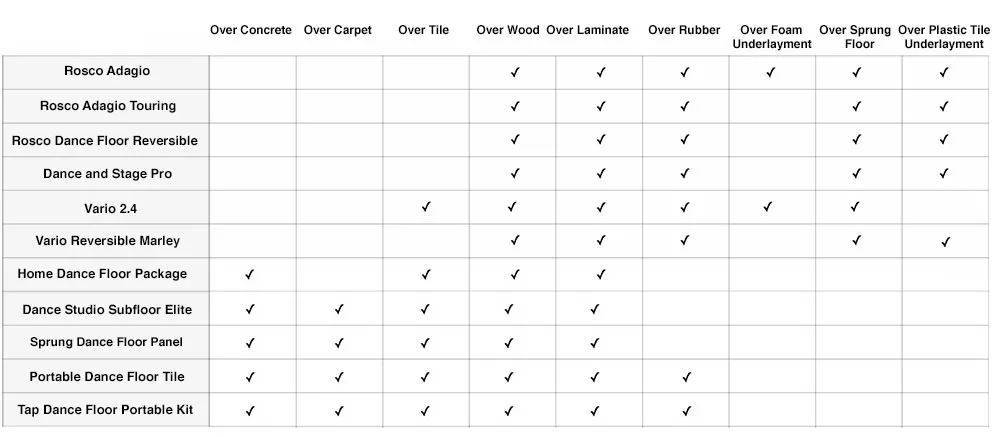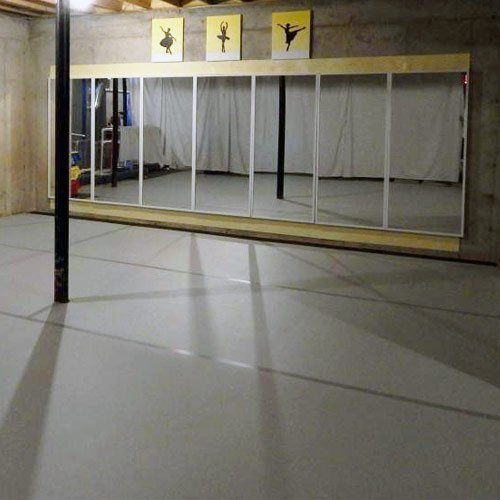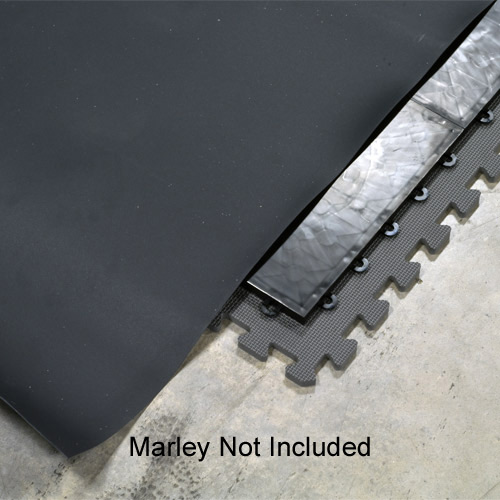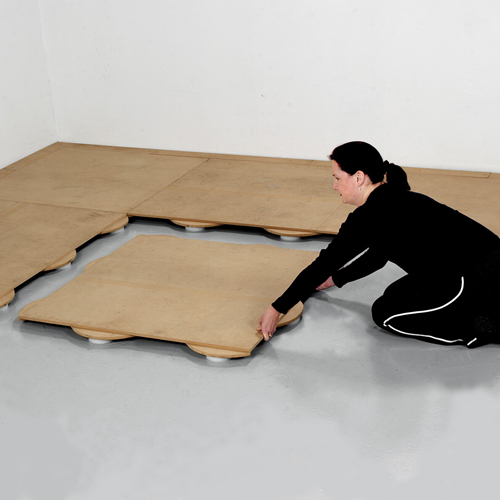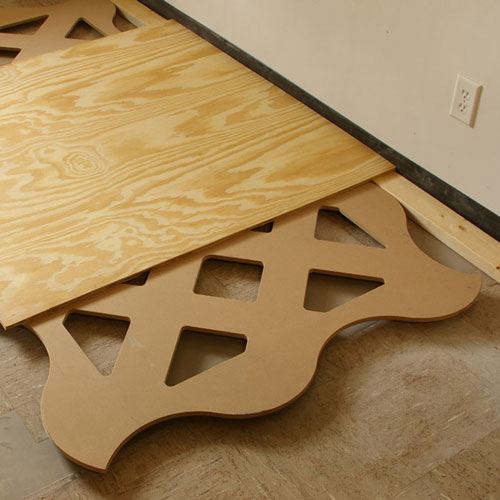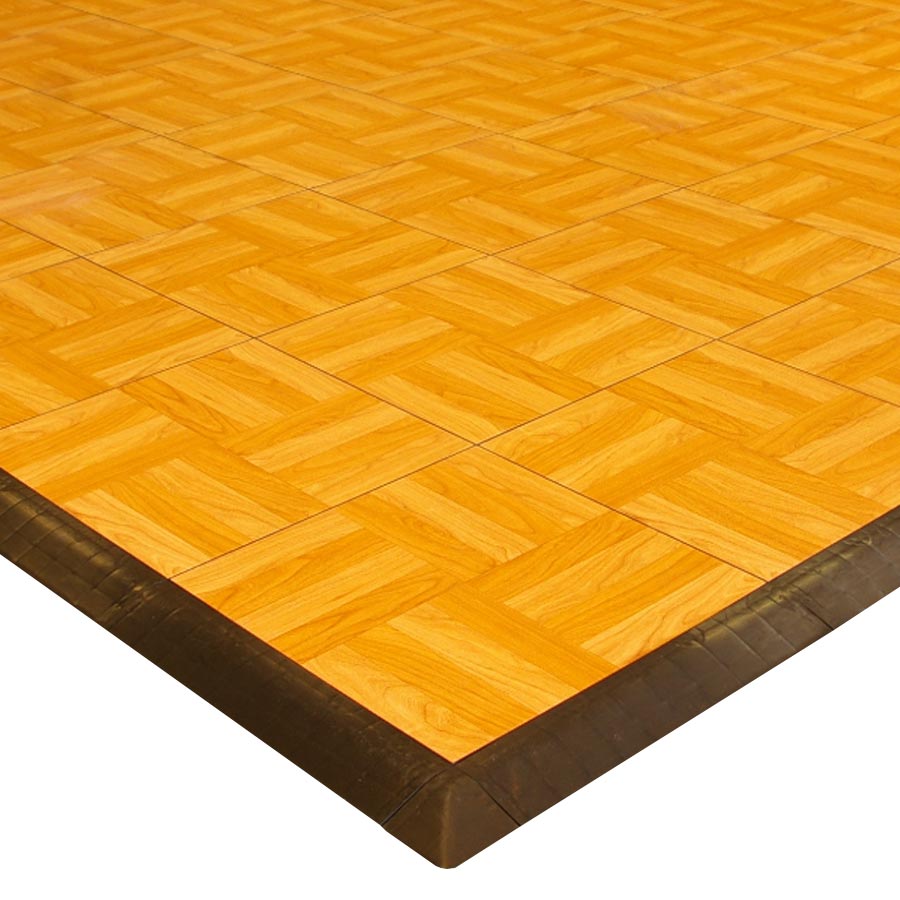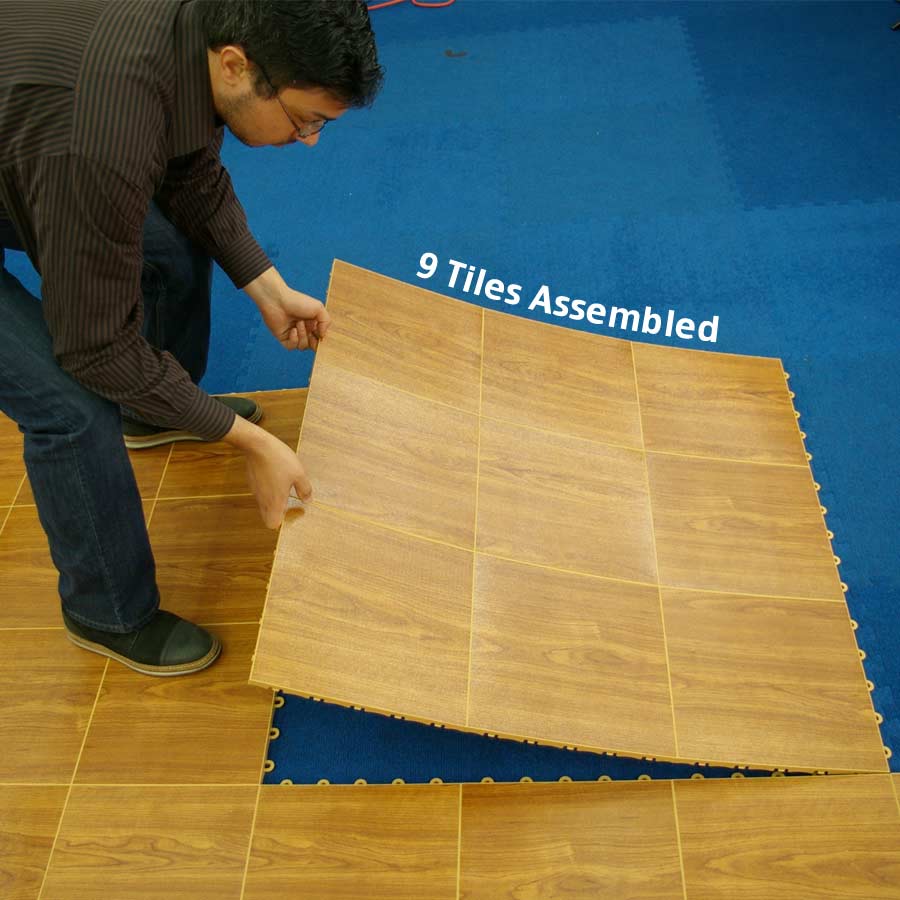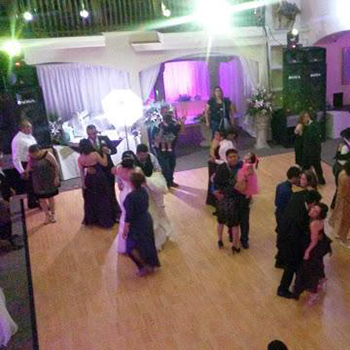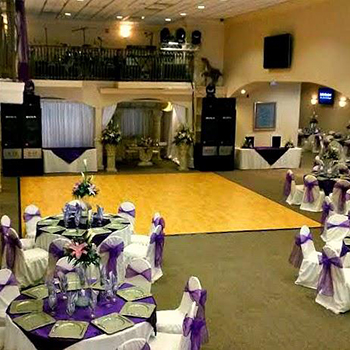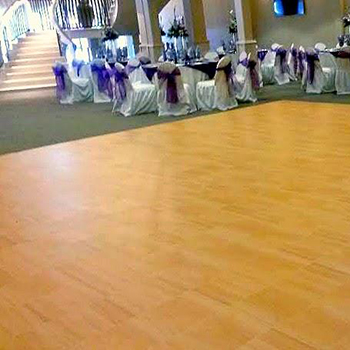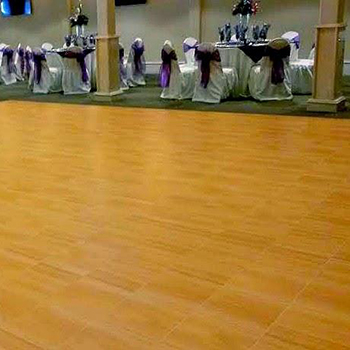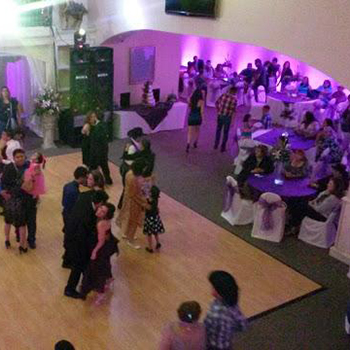Permanent vs. Portable Dance Flooring
Related Product: EZ Portable Dance Floor Tile 5/8 Inch x 1x1 Ft.
In either case, you are probably looking for a multi-purpose floor, suitable for many kinds of dance whether ballet, tap, ballroom, jazz, flamenco, modern, character, or clogging. Both portable and permanent floors can meet this need.
Let's start by looking at why you need dance flooring. Movement creates energy, energy which gets returned by the floor to the body.
Practicing or performing dance moves on improper flooring can cause shin splints, fatigue, strains, joint problems, and possibly broken bones or fractures. Concrete is the worst offender. It is hard, unyielding, and not energy-absorbing.
Dance Subfloors
To soften the effects of concrete, you need to add a dance surface plus a layer of air or a material containing air, like foam. In other words, you can't just put a layer of hardwood flooring down and be done with it. Permanent dance surfaces are installed over a sprung floor or floating floor.Underneath the dance surfaces are 1 to 2 layers of plywood, resting on neoprene pads and wood battens. Another option is foam rubber with a wood or other elastic layer on top. Any sort of temporary or portable dance needs to mimic the characteristics of a sprung floor. Believe it or not, there is so much energy generated by dancing that some ''green'' night clubs have installed dance floors containing transducers that act like shock absorbers and piezoelectric (electricity resulting from pressure) crystals that charge nearby batteries.
So now that you understand the need for a dance floor, start your search by asking some questions.
1. Do you own or rent the space?
2. Will you be using a dance floor for a long or short time?
3. What is the subfloor?
4. Will the flooring be used inside or outside?
5. What type of dance will be performed on this floor? A ballet floor needs to be very non-slip, yet tap, ballroom, and theater dance prefer a less non-slip surface.
6. Will anything else be done on the floor? Will you place tables and chairs or pieces of equipment on the floor?
Once you know the answers to questions like these, you can narrow down your choices.
Portable Dance Floors
Portable dance floors come in easy-to-snap-together tiles. They are commonly used for events like parties, weddings, or conferences where there is no permanent dance floor space available. Cruise ships, schools, and community centers use them as a way to utilize limited space - to create a multipurpose space.They can be designed for indoor or outdoor use. Floors are usually 1/2 to 1 inch thick and consist of 1x1 foot or 3x3 foot panels to create the desired size. Indoor floors might be constructed of wood, or honeycomb aluminum and laminate for both indoor and outdoor use.
Some floors are made of a polypropylene base with a commercial-grade laminate top surface. The tiles function as both subfloor and danceable surfaces. The top surface of the tile is a durable commercial-grade vinyl that resists scratches and includes UV protection. They are designed for repeated use in banquets, event centers, and hotels or community centers. You can even find or purchase a transport cart to make your kit complete.
Plastic tiles are another option, primarily for use as a subfloor or used in combination with foam or rubber as a substitute for a sprung floor.
Specialty flooring company Greatmats.com offers a two-part dance subfloor system designed for a roll of marley flooring on top. The bottom layer is 1/2 inch soft EVA foam tiles, which provide the necessary air cushion. Next, plastic 5/8 inch thick polypropylene tiles also lock together. Finally, marley flooring is the standard for dance floors - both portable and permanent.
Sprung Floors
For a permanent option, you could use any of the above methods, or create a sprung floor using tiles like the Rosco Wavelock tile where you provide your own subfloor - or the 3x5 Sprung Dance Floor panels which comes with a subfloor already attached. With both options, you would purchase rolls of marley flooring to tape down or glue/heat weld on top. Bear in mind that the full panels weigh 44 pounds apiece, so while they can be moved, it is not a job you'll want to do often.There are sprung floor systems made by dance floor leaders like Rosco that are designed to be covered with MDF boards and Rosco marley dance floor. These components were designed with input from professional dancers to achieve the right amount of resilience or spring.
The final option is to have a floor built. Since these types of sprung floors depend on a wood subfloor, they are not appropriate for outdoor use. You can have a contractor build a sprung floor, and some handy people have had success building their own floors, but it is easier to purchase a proven, dependable product, that has been professionally engineered.
Marley Surfaces
Marley is required for ballet, jazz, and modern dance, but also works well with tap and other forms of dance. Permanent marley flooring comes in rolls that are taped down with vinyl floor tape, but portable Marley rolls are available which weigh less, are also taped, and simply roll up when finished. Note that portable marley flooring is not recommended for daily tap dance use. For that, the stronger, permanent marley flooring is preferred.Modular Dance Floors
Finally, modular dance floors feature a plastic base tray and commercial-grade vinyl overlay. Their connector tabs are made for years of repeated reassembling. These high-quality floors can provide an upscale wood or stone look.While this floor is excellent for ballroom, Irish, clogging, Latin, and flamenco, ballet, jazz, and modern dance should consider a marley surface with few, if any seams. Tiles are sold individually to customize to the size of your floor, or as a kit.
While there are a daunting number of options out there, fortunately, there are also specialty flooring companies like Greatmats.com whose professional customer service representatives can help you find the perfect flooring choice for your home, studio, touring company, or event business.
Which Dance Floor is Right For You

